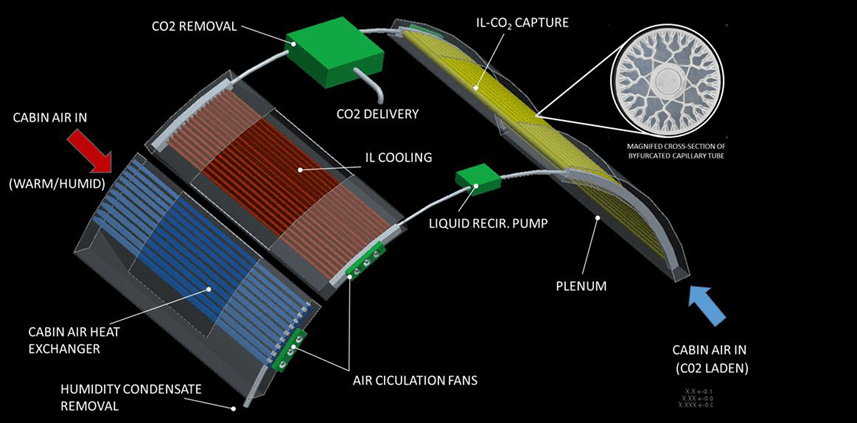John Graf
NASA Johnson Space Center
Graf 2015 Phase I Final Report
Description
Air Revitalization (AR) is a critical function for all Human Exploration Missions. Historically, air revitalization is performed by routing air through a complex set of ducts and removal beds that restrict airflow. Microgravity considerations usually require that removal beds are packed with granular solids’ these granular beds are relatively heavy, inefficient, and prone to dusting. Liquid based capture systems, such as those found on submarines, have proven to be smaller, more power efficient, and more reliable, but the gas/liquid contactors found in submarines need gravity. Until recently, the only way to use liquid based capture systems in microgravity was to employ a gas permeable membrane. Membranes suffer slow kinetics and are prone to poisoning. Recent developments in additive manufacturing and capillary fluid mechanics makes it possible to directly expose liquids to cabin air in microgravity conditions, and make a microgravity version of a submarine AR system possible. A microgravity compatible gas/liquid contactor also makes it possible to completely re-imagine the AR system: instead of forcing air through a complex series of ducts and beds, air revitalization hardware can take the form of ‘Curtains’, deployed on the ‘Thirsty Walls’ of spacecraft. Compared to the traditional HVAC approach used on ISS, Thirsty Walls can reduce the number of rotating pieces of equipment for air revitalization from 19 to 8, and eliminate all of the high pressure and high flow velocity elements. A thirsty walls approach using Monoethanolamine (MEA) the CO2 capture liquid used in submarines – would make it possible to achieve submarine levels of performance on spacecraft, but this proposal asserts that if the Thirsty Walls approach were used with Ionic Liquids (ILs) instead of MEA, power efficiency could be even greater than that found on submarines. A direct gas/liquid contactor, placed into a Thirsty Walls configuration, pumping an Ionic Liquid for CO2 capture offers the chance to make a transformational improvement to air revitalization on spacecraft.




























